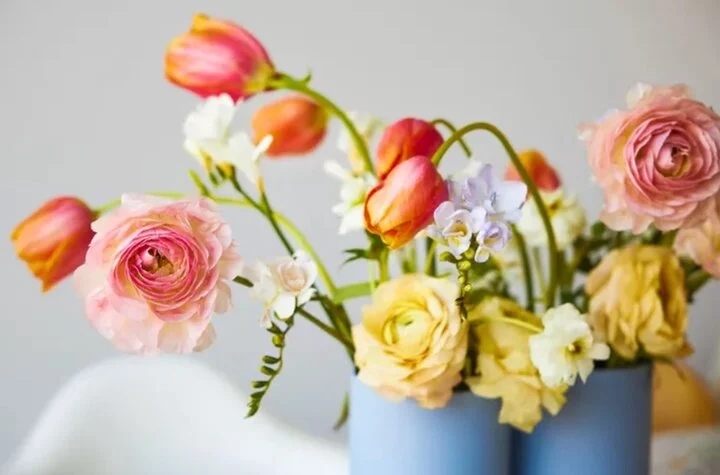Keeping flowers fresh for an extended period can be challenging, especially when they start to wither and wilt within a few days. However, with these three simple steps, you can revive wilted flowers and bring your bouquet back to life.
Effective and Quick Ways to Revive Wilting Flowers
To bring your wilting flowers back to life, try these solutions:
Trim the Stems, Remove Wilted Leaves and Branches
To revive your flowers, trim a small portion of the stem to improve water absorption. When flowers start to wilt, the part of the stem submerged in water often begins to rot. Trimming the stems also helps flowers last longer, and you should do this each time you change the water.
Next, inspect your flowers and remove any wilted leaves or branches. This prevents decay and creates a more spacious environment around the stem, allowing the flower to absorb water more easily. Fallen leaves in the vase provide an ideal environment for bacterial growth.

With the right care, you can revive wilted flowers. (Photo: Getty)
Soak Flowers in Warm Water
If you notice your flowers starting to wilt, prepare a basin of warm water (at a temperature that feels comfortable to your hand) and briefly soak the stems. This method can help revive the flowers and extend their lifespan.
Additionally, you can add a little sugar and vinegar to the vase water to further prolong the freshness of your flowers.
Clean the Vase
To keep your flowers fresh or revive those that are starting to wilt, it’s essential to clean the vase before rearranging the flowers. Ensure you remove all dirt and slime from the vase. If you use dish soap, thoroughly rinse the vase with clean water to eliminate any chemical residue that could affect the flower water.
After cleaning, rinse the vase with hot water to kill any remaining bacteria, and then fill it with fresh water. If the vase is not thoroughly cleaned, bacteria can accumulate and cause the flowers to wither quickly.
Tips to Keep Flowers Fresh for Longer
To prolong the freshness of your flowers, consider these flower-arranging and care tips:
Prepare the Vase and Water: Use a clean vase that is appropriately sized to hold enough water for your flowers. Ensure the vase is washed before adding flowers.
Cut the Stems: Before placing the flowers in the vase, cut the stems at a 45-degree angle to enhance water absorption.
Remove Lower Leaves: Removing leaves from the part of the stem that will be submerged helps prevent leaf decay in the water. It is also advisable to leave the upper leaves intact to minimize water loss.
Change the Water Frequently: Change the water in the vase daily or at least every two days. Clean water inhibits bacterial and fungal growth, keeping your flowers fresh for a more extended period.
Place the Flowers in a Suitable Location: Keep your flowers in a well-ventilated area, away from direct sunlight and high temperatures. Avoid placing them near fans or air conditioners to prevent dehydration. During the evenings, keep the vase in a cool, humid place to prolong their freshness.
According to VTC News



































